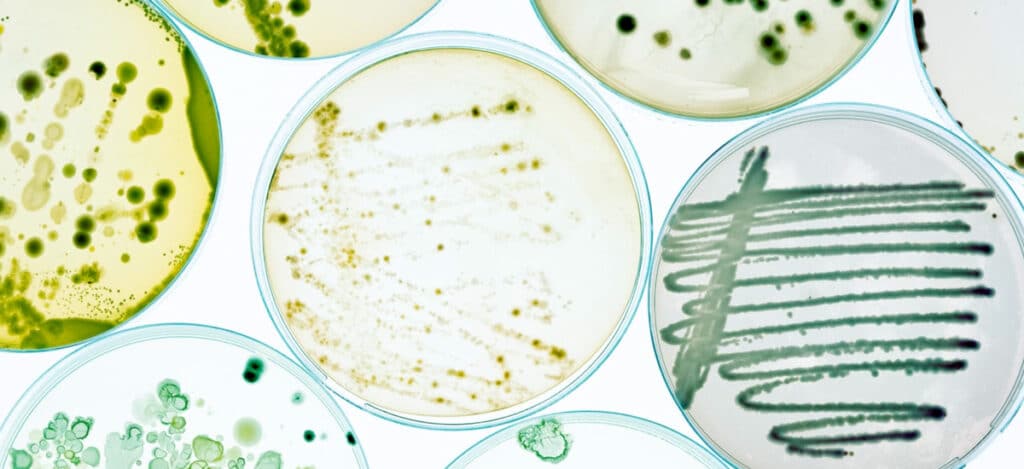Bioburden Testing vs. Microbial Aerosol Challenge Testing
What is bioburden?
The “bio” in bioburden refers to live biological organisms, and the “burden” in bioburden refers to the concentration of the viable biological organisms. Thus, bioburden is the concentration or quantity of microorganisms in a given area or from a particular sample. The higher the concentration of viable organisms on a device or product, the higher the burden is to kill those organisms, whether it is killing the organisms through sterilization procedures or killing the organisms through the effort of the human immune system. This article will cover rapid bioburden testing protocols, what is a CFU in bioburden testing, test vial enclosure, and aerosol challenge testing protocols for labs that perform bioburden tests and other regulatory tests.
What is a microbial challenge?
The “microbial” in microbial challenge testing refers to microorganisms. The “challenge” component of microbial challenge testing refers to exposure. In a physical challenge, you are exposing your body to physical challenges. In a microbial challenge, the sterile barrier system (packaging) of a product is exposed to (challenged by) microbes.
What are the differences between microbial challenge and bioburden?
Bioburden has to do with identifying the microbial burden already in a sample. Microbial challenge has to do with adding microbial load to a sample. Where bioburden refers to all microorganisms (fungi, bacteria, etc.), microbial challenge typically refers to a single microorganism that is used for the microbial challenge. For microbial aerosol challenge testing, this microorganism is most commonly Bacillus atrophaeus. Labs that perform bioburden tests and microbial challenges use colony forming units (CFU’s) to quantify the number of microbes in a sample.
What are the differences between bioburden testing and microbial aerosol testing?
Labs that perform bioburden tests measure the viable organisms present in a given sample expressed as a total viable count. This total viable count gives a value to the microbial contamination level upon or within a particular product. This total viable count is expressed as colony-forming units (CFU’s). Furthermore, bioburden testing linked with microbiology testing can identify the types of live microorganisms present in a sample from a product, package, or manufacturing environment. Rapid bioburden testing follows the methods outlined in USP 60, USP 61, and USP 62.
Bioburden testing is used to confirm the sterility of a product or process. Unlike bioburden testing, microbial aerosol challenge testing is used to test vial enclosures to ensure that the vial enclosure does not allow microbes to enter the vials following the entry and exit of syringe needles during dosage draws. For microbial aerosol testing, a prepared Bacillus atrophaeus suspension is loaded to an aerosol chamber’s nebulizers, and the suspension is aerosolized overfilled vial samples and positive control vials. Like bioburden testing, microbial aerosol challenge testing is a quantitative test, and results are given in CFUs. Microbial aerosol challenge testing isn’t governed by any USP guidelines but by ASTM, PDA, and ISO guidelines. For specifics, please see the reference section at the bottom of this article.
Why are both bioburden testing and microbial aerosol testing important?
Bioburden testing is an important quality control step that detects the level of contamination of a product at any stage, from initial product manufacture to final distribution. As microorganisms exist on every surface (including our body), bioburden can be accidentally introduced during the manufacturing or packaging process in many ways. Some of the most common examples are contamination through the raw materials used, technicians, tubing/piping used to transfer product between development stages in a process, or the manufacturing environment itself. With such abundant sources of contamination, regular bioburden testing supports the long-term control of manufacturing sites.
Microbial aerosol challenge tests evaluate if external bacterial contaminants can enter a medical product’s sterile packaging system. Microbial aerosol challenge testing is essential for verifying multi-use vial enclosure systems (such as those used for vaccines and other parenteral products). All microbial aerosol challenge methods are performed in an ISO Class 5 laminar flow hood to maintain sterility during the assessment. Microbial aerosol challenge testing ensures that the sterile or aseptic vials act as an effective microbial barrier and preserves the sterility of the product even when the outside is exposed to high concentrations of bacteria. Vials with robust microbial barriers will not have bacterial growth within the vial after aerosol challenge testing.

Summary
Overall, both rapid bioburden testing and microbial aerosol testing are imperative for regulatory approval of medical devices or products and their packaging. These tests ensure that medical devices, products, and packaging are sterile and maintain their sterility. Maintenance of sterility ensures that patients will not be at risk of infection following device exposure or product implantation.
MycoScience is a contract manufacturing organization specializing in Microbial Aerosol Challenge Testing and Bioburden Testing. Additionally, MycoScience provides sterile syringe and vial filling for parenteral products. MycoScience also offers Bacterial Endotoxin Testing, Preservative Efficacy Testing, Sterilization Validations, Cleaning Validations, Accelerated Aging, Microbiology Testing, Cytotoxicity Testing, EO Residual Testing, Package Integrity Testing & Environmental Monitoring services for medical device companies, and allied industries. MycoScience is an ISO 13485 certified facility.
References
Frank R. Noyes. Noyes’ Knee Disorders: Surgery, Rehabilitation, Clinical Outcomes. Elsevier. 2010.
United States Pharmacopeial Convention. <60> Microbiological Examination of Nonsterile Products- Tests for Burkholderia Cepacia Complex. Rockville, MD, USA. 2021. (USPC <60>)
United States Pharmacopeial Convention. <61> Microbiological Examination of Nonsterile Products: Microbial Enumeration Tests. Rockville, MD, USA. 2021. (USPC <61>)
United States Pharmacopeial Convention. <62> Microbiological Examination Of Nonsterile Products: Tests For Specified Microorganisms. Rockville, MD, USA. 2021. (USP <62>)
ANSI/AAMI/ISO 11607-1, 2006/A1:2014, Packaging for terminally sterilized medical devices – Part 1: Requirements for materials, sterile barrier systems and packaging, Amendment 1
ASTM F1608 – 16, Standard Test Method for Microbial Ranking of Porous Packaging Materials (Exposure Chamber Method)
Technical Report No. 27, Pharmaceutical Packaging integrity, 1998, PDA
Technical Information Bulletin No. 4, Aspects of Container/closure Integrity, PDA
Sharing this in your social netwroks

